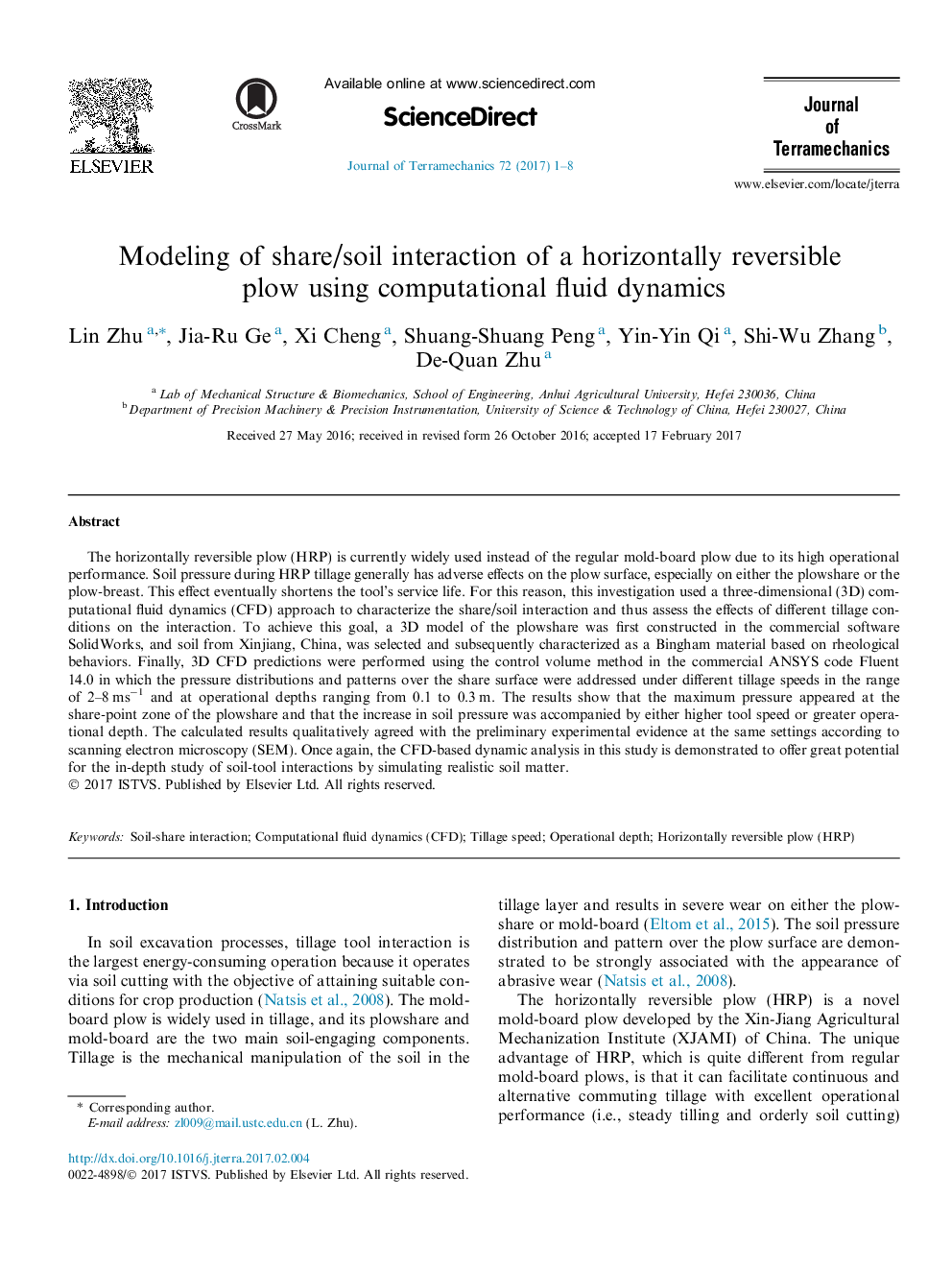| Article ID | Journal | Published Year | Pages | File Type |
|---|---|---|---|---|
| 5018349 | Journal of Terramechanics | 2017 | 8 Pages |
Abstract
The horizontally reversible plow (HRP) is currently widely used instead of the regular mold-board plow due to its high operational performance. Soil pressure during HRP tillage generally has adverse effects on the plow surface, especially on either the plowshare or the plow-breast. This effect eventually shortens the tool's service life. For this reason, this investigation used a three-dimensional (3D) computational fluid dynamics (CFD) approach to characterize the share/soil interaction and thus assess the effects of different tillage conditions on the interaction. To achieve this goal, a 3D model of the plowshare was first constructed in the commercial software SolidWorks, and soil from Xinjiang, China, was selected and subsequently characterized as a Bingham material based on rheological behaviors. Finally, 3D CFD predictions were performed using the control volume method in the commercial ANSYS code Fluent 14.0 in which the pressure distributions and patterns over the share surface were addressed under different tillage speeds in the range of 2-8Â msâ1 and at operational depths ranging from 0.1 to 0.3Â m. The results show that the maximum pressure appeared at the share-point zone of the plowshare and that the increase in soil pressure was accompanied by either higher tool speed or greater operational depth. The calculated results qualitatively agreed with the preliminary experimental evidence at the same settings according to scanning electron microscopy (SEM). Once again, the CFD-based dynamic analysis in this study is demonstrated to offer great potential for the in-depth study of soil-tool interactions by simulating realistic soil matter.
Keywords
Related Topics
Physical Sciences and Engineering
Earth and Planetary Sciences
Geotechnical Engineering and Engineering Geology
Authors
Lin Zhu, Jia-Ru Ge, Xi Cheng, Shuang-Shuang Peng, Yin-Yin Qi, Shi-Wu Zhang, De-Quan Zhu,
